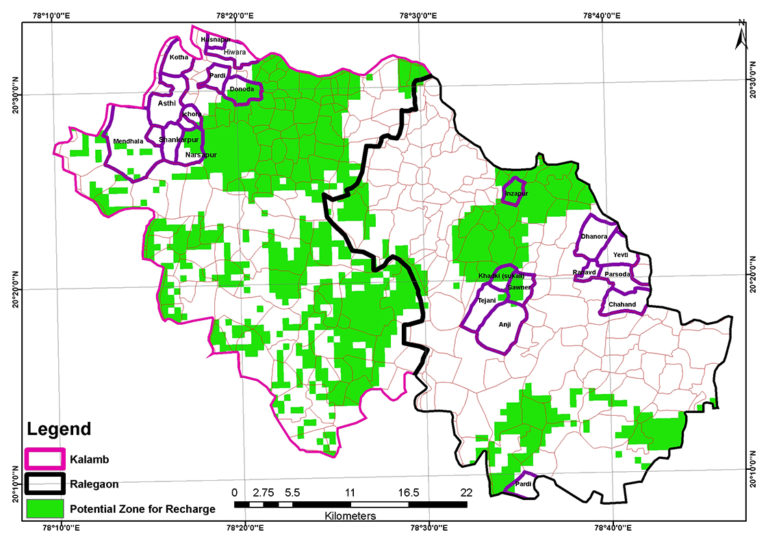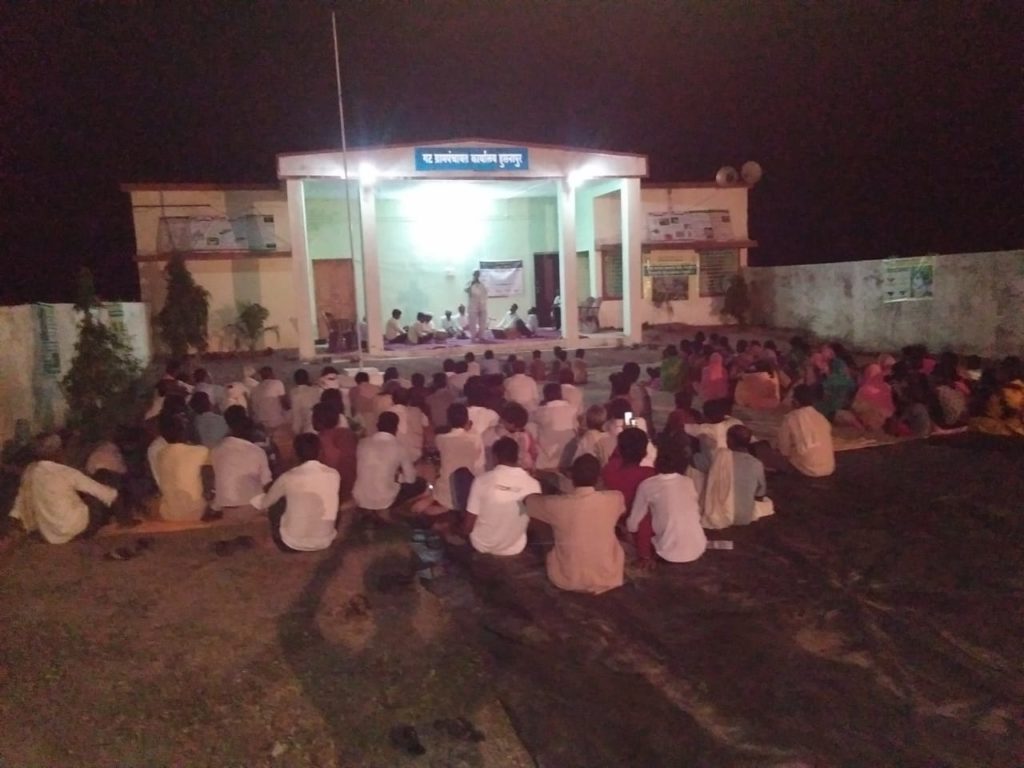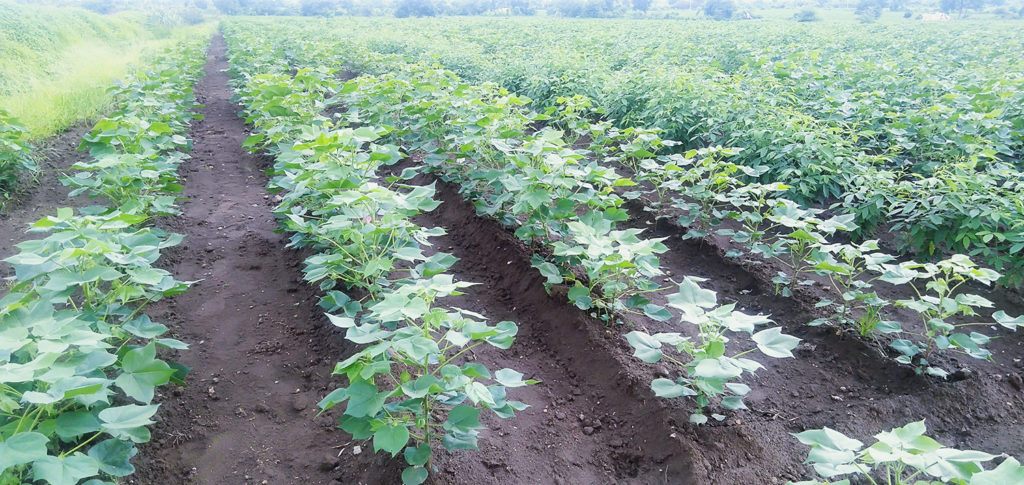On a sunny October morning in 2019, members of the Donoda village council (Gram Panchayat) in Yavatmal, Maharashtra met to better understand what they could do about the lack of irrigation water for their cotton crops. Sadly, Yavatmal had seen less than the normal amount of rainfall during the monsoon months and with cotton crops near flowering stage, irrigation would be essential for all farmers in the region. Unfortunately, there simply wasn’t enough water to support all farmers, and only a small number could access groundwater sources. What would happen to their crops? How would they support their families if it didn’t? What, if anything, could they do to solve the problem? Feeling a sense of desperation, Panchayat members sat down and stared at each other, discussing possible ways to address the problem.
Fortunately, the Institute for Sustainable Communities (ISC), working under the USAID-Gap Inc.-led Women + Water Alliance, had a solution. The Women + Water Alliance is a which is a global USAID cooperative agreement to Gap Inc. whose goal is to improve and sustain the health and well-being of women and communities touched by the apparel industry in India. To help Donoda and other villages like it, farmers would have to learn more about water conservation but would also need help in augmenting sources of supply.
Before any of this could get started, farmers first had to become aware of just how much water they were using. ISC and its partner, Action for Agricultural Renewal in Maharashtra (AFRAM), worked closely in 10 villages in Kalamb block in Maharashtra to map out the state of water resources and identify how water was being used. “We never knew that 98% of the total water use in our village was for irrigating cotton and other crops,” said one village extension worker. The farmers soon came to realize that they had an important role to play to conserve water resources.

Cotton is the fundamental input for the apparel industry, but is a resource intensive crop using large amount of water, fertilizers and pesticides. Realizing the “More Crop Per Drop” vision of Prime Minister Narendra Modi is critical to the sustainability of cotton farming in India. With 5.8 million farmers involved in cotton farming in the country, engaging them in resource optimization is the need of the hour.
To encourage reduction in water, a set of “Good Operation Practices,” were identified and the farmers were also trained through farmer field schools on the negative impacts of overuse of water and other inputs. The three main practices that have the potential to reduce water use in cotton framing include: 1) in-situ soil moisture conservation through farm bunding and use of organic manure2) inter-cropping which prevents loss of soil moisture and provides additional sources of income, and 3) furrow and alternate furrow irrigation which reduces the volumetric application of water. Farmers visited the Central Institute of Cotton Research to learn about improved cultivation practices, and they were also trained on the use of technology in farming.
“We could see a change in the mindset of the farmers who were now more vocal in expressing their concerns and seeking solutions,” said Shantaram Sakore, Program Director at AFARM. But more importantly, that change in mindset led to real change in the field. Water productivity subsequently increased by 37% in the project villages in Maharashtra. Importantly, these efforts combined with training on production practices led to a 16% increase in cotton production and actually reduced the cost of cultivation by around Rs. 5,000 (USD 71) per acre Some farmers have used the monetary savings from farming to invest in government run schemes for their kids.
Identifying new sources of supply that would not deplete scarce groundwater would also have to be part of the solution for the villages of Maharashtra for long-term sustainability. Based on a scientific mapping exercise facilitated by ISC, one village was identified as a location with a sustainable water source. The team of ISC, AFARM and the villagers determined a plan for deepening, widening, and de-silting a stream so that it could both provide an additional source of supply for crop irrigation but also help to recharge groundwater. The long term benefit of this result would allow water sources to be perennial reducing the risk of water scarcity in summer months. This benefits women as they will not have to travel long distances to fetch water for their household needs.
Recognizing that real change takes time, ISC and its partners set up “awareness camps” to continue informing villagers about the reality of their water situation and to reinforce training on water conservation, both in agriculture and in their homes.


As the members of the Panchayat reflect on that moment a few months ago, they now feel a greater sense of empowerment to make the changes needed to adapt to their changing world. With 3 out to the 5 years seeing drought like conditions, it is important that communities work for long term drought proofing and source strengthening measures. The head of the village council assures the team they will work towards maintaining the water sources in the village. “We realize the importance of water conservation. It is the only way ahead”, opines Asha Tai. As they look out their windows at the beautiful cotton crops staring at them, they know that they can play a role in ensuring that it happens again next year. They know that they can feed their families but also ensure that their children can feed themselves one day. With a little support, these farmers are well on their way to a secure and sustainable future.
Romit Sen, Associate Director, Institute for Sustainable Communities
This post does not represent the views or positions of the U.S. Agency for International Development, the U.S. Government, or Gap Inc.
